So Mirror’s Edge Catalyst came out recently. I’ve haven’t seen many of the reviews for this game, however the general vibe I’ve gotten is that the game is disappointing, or isn’t satisfying. Though this might be due to some on release bugs or performance issues, which isn’t surprising. For me, Mirror’s Edge was a breath of fresh air. DICE introduced new concepts and mechanics to a market overrun by the bang bang shooty games that ruled the market at the time. I played Mirror’s Edge relatively late, though I was still intrigued by the game’s parkour mechanics. Needless to say, I’ve been anticipating Mirror’s Edge Catalyst for a while.
Although I had been anticipating the game, I intentionally failed to keep up with information about the game. Though this might be a stupid move on my part, as I’m unable to make an informed purchase of the game. I do the same with many other game sequels that I anticipate in order to keep an element of surprise or satisfaction when I encounter new mechanics or concepts that iterate on the previous game.
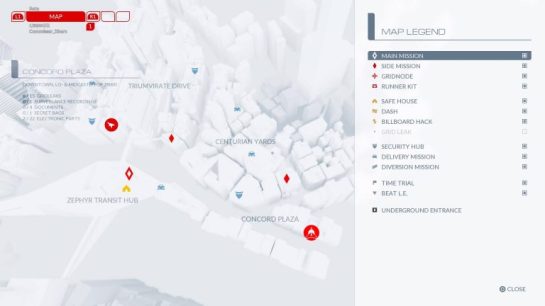
Which is why when I ran into Catalyst’s open world, I was pleasantly surprised. Mirror’s Edge was made primarily of closed courses wherein the player would run and jump from A to B. With the levels being separated and time trials being a separate game mode that take place on the same closed off courses much like Portal 2’s challenge mode. DICE have created a world which is somewhat akin to Skyrim. Story progression missions and side missions such as dead drops, and in-game/player created Dashes/time trials marked on the map. These missions take place in this open world, allowing the player to find the most efficient path across the city without the restrictions of a defined course.
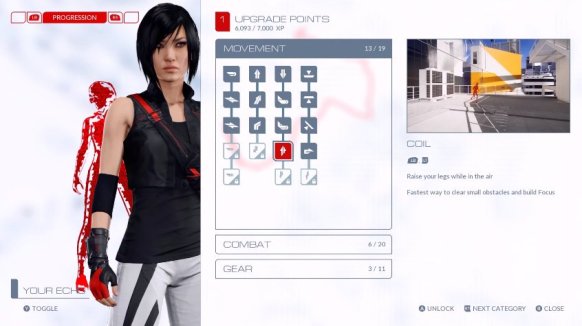
One of the biggest changes from Mirror’s Edge were the skill unlocks. I’ll admit that when I saw that basic mechanics from the first game and combat moves/buffs were locked behind an experience wall I was kind of confused. Though there are some arguments for this kind of progression. Because of the game’s concept it is understandably difficult to make a meaningful progression other than locking off some parts of the city until adequate story progression is achieved. In addition it may be argued that this game is a prequel to Mirror’s Edge, and so canonically it wouldn’t make sense to have Faith automatically have this set of skills, even though she is established to be an experienced runner from the beginning of the game and some of the skills she may unlock are seemingly basic.
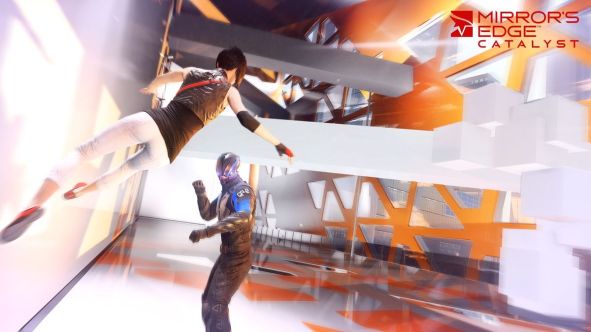
One of the greatest quips with Mirror’s Edge is the combat system. Though I didn’t personally have a problem with it, I did see how people perceived the combat as clunky and unsatisfying. Which is why I was also pleasantly surprised that Catalyst decided to make combat a central part of of the game. The tutorial of Catalyst outlined that Faith is able to light attack and heavy attack with each attack having pros and cons. The light attacks are primarily for quickly dispatching weak enemies or for quickly escaping the vicinity when used in conjunction with a ‘traversal movement’. Whilst heavy attacks are purposed for confrontation, with heavy attacks being used to knock enemies into the environment or other enemies to gain a time and positional advantage.
These are the greatest changes from Mirror’s Edge, I must say that even only having played a sliver of the game, I am satisfied with Catalyst. These new combat mechanics are welcome additions and I am glad that DICE chose to make it clear that the combat has improved upon it. The open world is definitely a welcome addition, being able to establish my own route from A to B while completing a plethora of community made courses calls for praise. The only real problems I have faced with Catalyst are the spontaneous on release bugs. Other than this I think that Mirror’s Edge Catalyst is a worthy prequel to what is, in my eyes, a classic title.
Tylah Kapa
Twitter: @JadeKapa
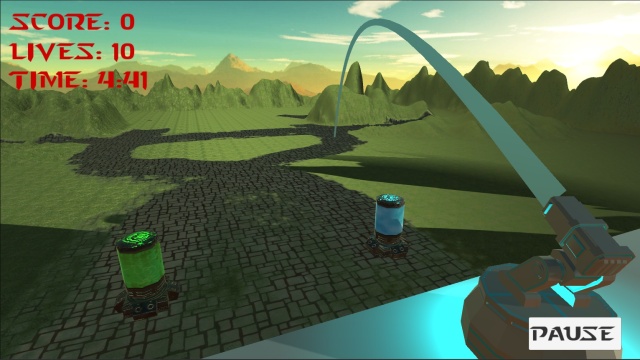




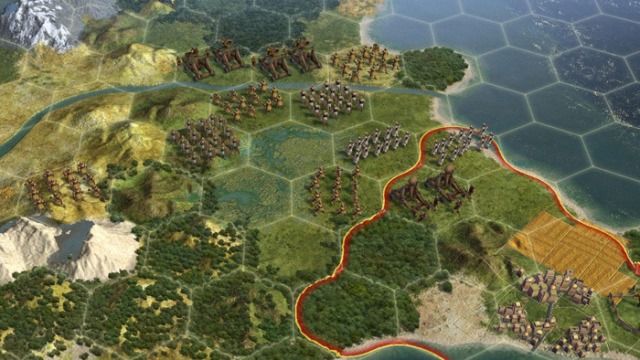 Civilisation V play
Civilisation V play




